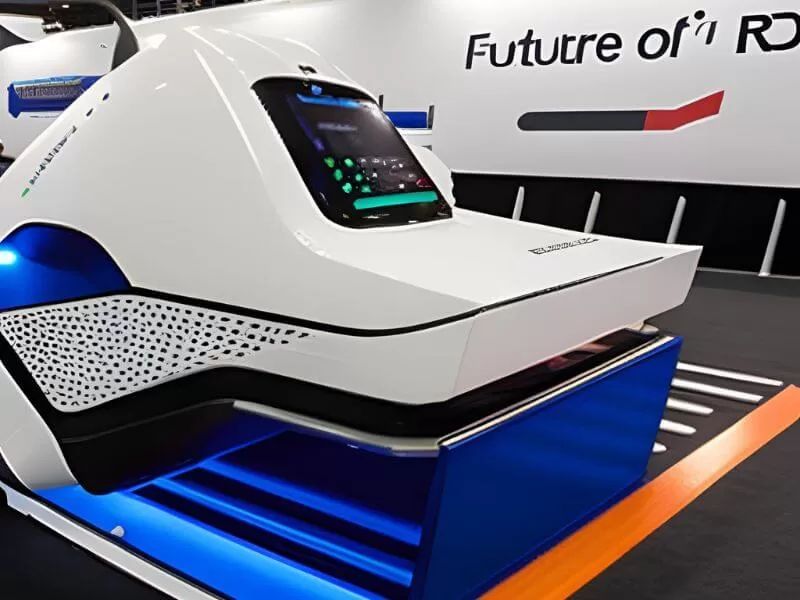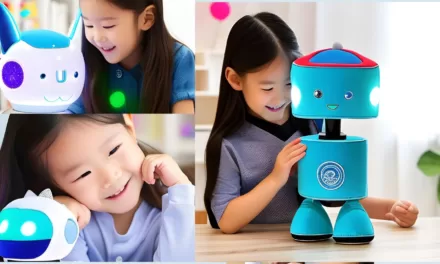Introduction: The Future of Robotics!
Robots have become an integral part of our lives, revolutionizing various industries and transforming the way we work and live. Defined as autonomous or semi-autonomous machines that can carry out complex tasks, robotics has seen remarkable advancements in recent years.
In this article, we delve into the fascinating world of robotics, examining the latest trends and technologies that are shaping its future.

Evolution of Robotics:
From their humble beginnings to the present, robots have come a long way. The roots of robotics can be traced back to ancient times, with early mechanical devices designed to mimic human actions. However, it wasn’t until the 20th century that significant strides were made in robotics.
However, the first industrial robots emerged in the 1960s, paving the way for automation in manufacturing processes. Over time, robotics expanded into various sectors, including healthcare, agriculture, logistics, and service industries. Today, robotics plays a crucial role in enhancing productivity, efficiency, and safety across diverse fields.
Current State of Robotics:
At present, we find ourselves in an era where robotics is rapidly evolving and finding applications in multiple industries.
In manufacturing, robots have revolutionized assembly lines, carrying out repetitive tasks with precision and speed.
Again, in Healthcare and medical robotics have improved surgical procedures, enabled remote diagnosis, and enhanced patient care.
Similarly, in agriculture, robots assist with planting, harvesting, and monitoring crop health. Logistics and warehousing benefit from robots in streamlining operations, while service and hospitality industries employ robots for tasks like cleaning, concierge services, and customer interaction.
These examples represent the wide range of innovative applications that robotics has to offer in various sectors.
Advancements in Robotic Technologies:
One of the driving forces behind the growth of robotics is the integration of Artificial Intelligence (AI) and Machine Learning (ML).
AI empowers robots with decision-making capabilities, enabling them to adapt and learn from their environment. ML algorithms enable robots to improve their performance over time by analyzing large datasets and recognizing patterns. Sensing and perception technologies have also made significant progress.
Vision and image recognition systems allow robots to identify objects and navigate their surroundings effectively. Tactile and force sensing enables robots to interact with objects and humans with enhanced dexterity. Moreover, advancements in mobility and locomotion have led to the development of wheeled and tracked robots, legged and bipedal robots, as well as flying and aerial robots.
These advancements open up new possibilities for robots to navigate complex environments and perform tasks in a variety of contexts. Human-robot interaction has also seen considerable advancements, with natural language processing and speech recognition enabling seamless communication between humans and robots.
Gesture and facial recognition technologies allow robots to interpret human actions and emotions accurately. Collaborative and cooperative robots are designed to work alongside humans, enhancing productivity and safety in shared workspaces.
Emerging Trends in Robotics: The Future of Robotics!
Soft robotics is an emerging field that focuses on the development of flexible and adaptable robotic systems. Inspired by biological organisms, soft robots can deform and conform to their environment, making them suitable for delicate tasks and interactions with humans.
Besides, Swarm robotics is another exciting trend, where multiple robots work together to achieve a common goal. Through coordination and collaboration, swarm robots can explore unknown territories, search for objects, or perform rescue missions more efficiently.
However, as robotics continues to advance, it also raises ethical and social implications. It is important to address the ethical considerations in robotics development and deployment, ensuring that robots are designed and used in a responsible and beneficial manner. The impact of robotics on employment and the job market is another aspect that requires attention, as automation and robotics may displace certain job roles while creating new opportunities in the robotics industry.
Future of Robotics: Prospects and Possibilities:
Looking ahead, robotics holds immense potential in several areas. In space exploration, robots play a crucial role in gathering data, conducting experiments, and even preparing for future human colonization.
Where Advanced space rovers and probes are being developed to navigate challenging terrains and explore celestial bodies. Personal robotics and assistive devices are also poised to become more prevalent.
Similarly, Domestic robots that assist with household chores, provide companionship, and improve the overall quality of life is gaining popularity. Additionally, assistive robotics cater to the needs of the elderly and disabled, enhancing their independence and mobility.
On the other hand, the Integration of robotics with the Internet of Things (IoT) is another exciting prospect. By connecting robots with smart homes and industrial systems, IoT facilitates seamless automation, data sharing, and enhanced control over robotic operations.
Challenges and Considerations:
While the future of robotics seems promising, it is not without its challenges. Safety and security concerns must be addressed to ensure the well-being of both humans and robots. Ensuring safe interactions between humans and robots requires robust safety measures and risk assessments.
Again, Cybersecurity also becomes a critical aspect, as robots become more connected and susceptible to potential threats. Establishing legal and regulatory frameworks is essential to govern the development and deployment of robots. Determining liability and responsibility in the event of robotic incidents and accidents is a complex issue that requires careful consideration.
Furthermore, it is crucial to develop ethical guidelines that guide robotics research and prevent the misuse of robotic technologies.
Conclusion:
In brief, the future of robotics is a world of endless possibilities. The latest trends and technologies in robotics are transforming industries, enhancing productivity, and improving the quality of life. As robotics continues to evolve, it is vital to stay informed about the latest developments and embrace the transformative potential of this field.
Therefore, by exploring innovative applications, advancing technologies, and addressing the associated challenges, we can pave the way for a future where robots work alongside humans, augmenting our capabilities and shaping a more efficient and sustainable world.


